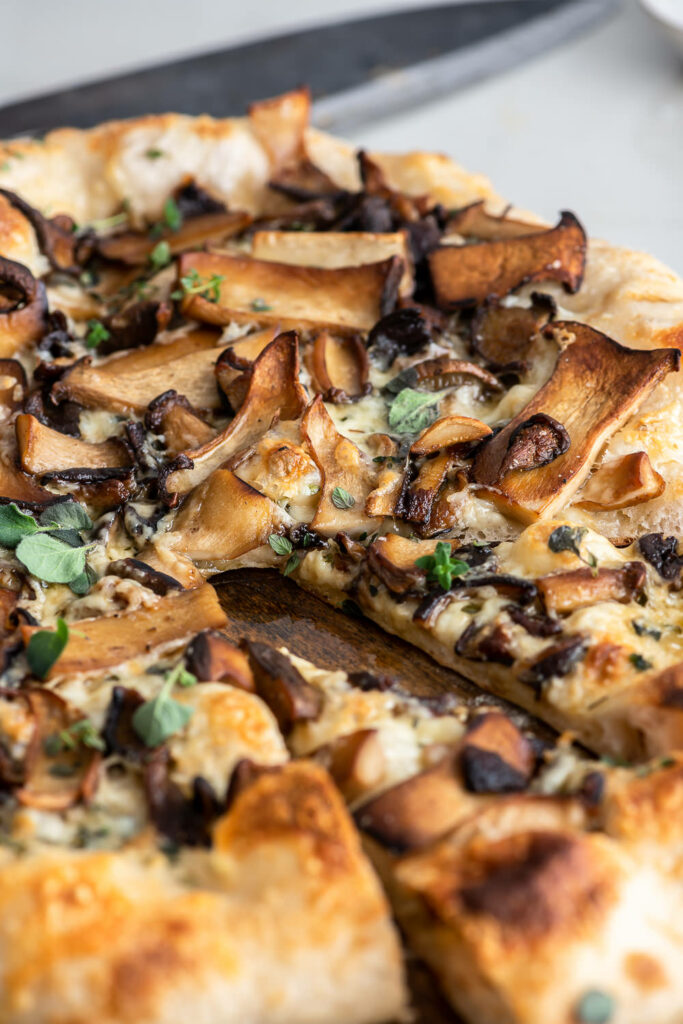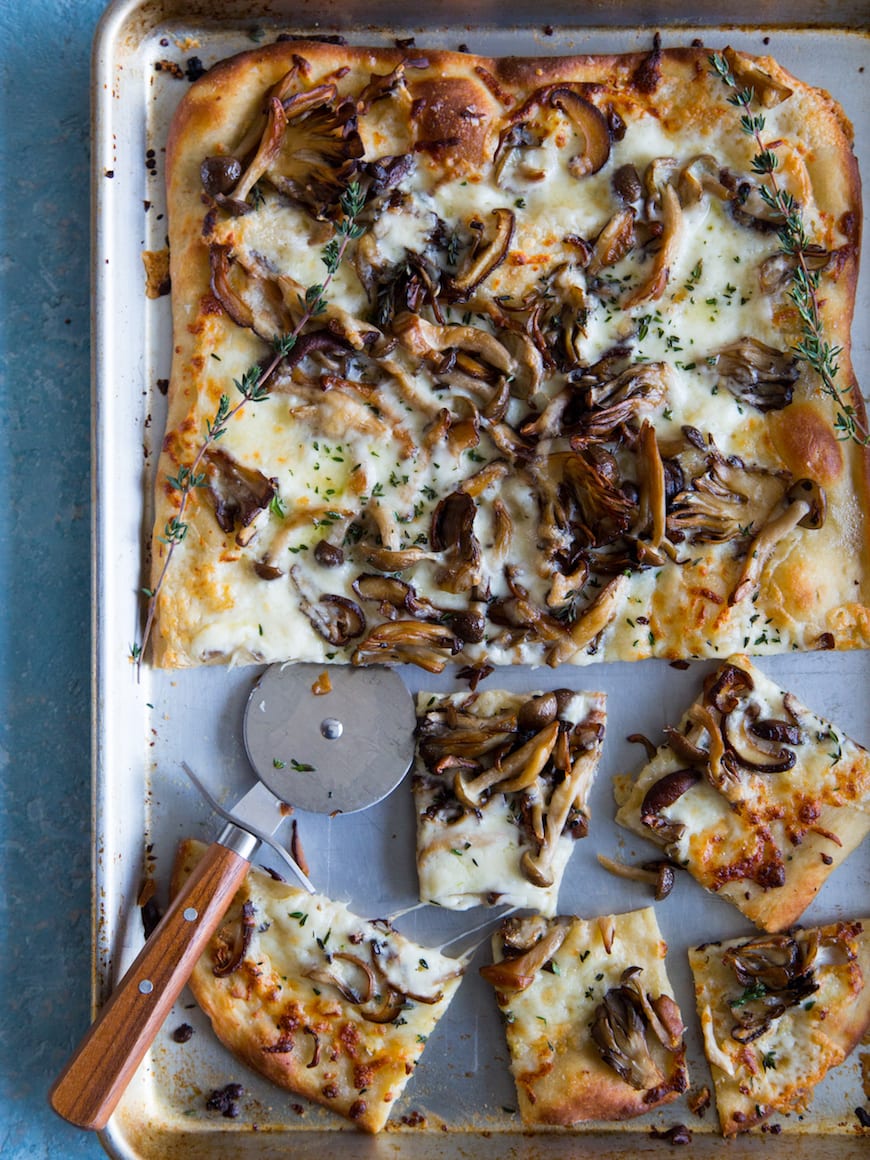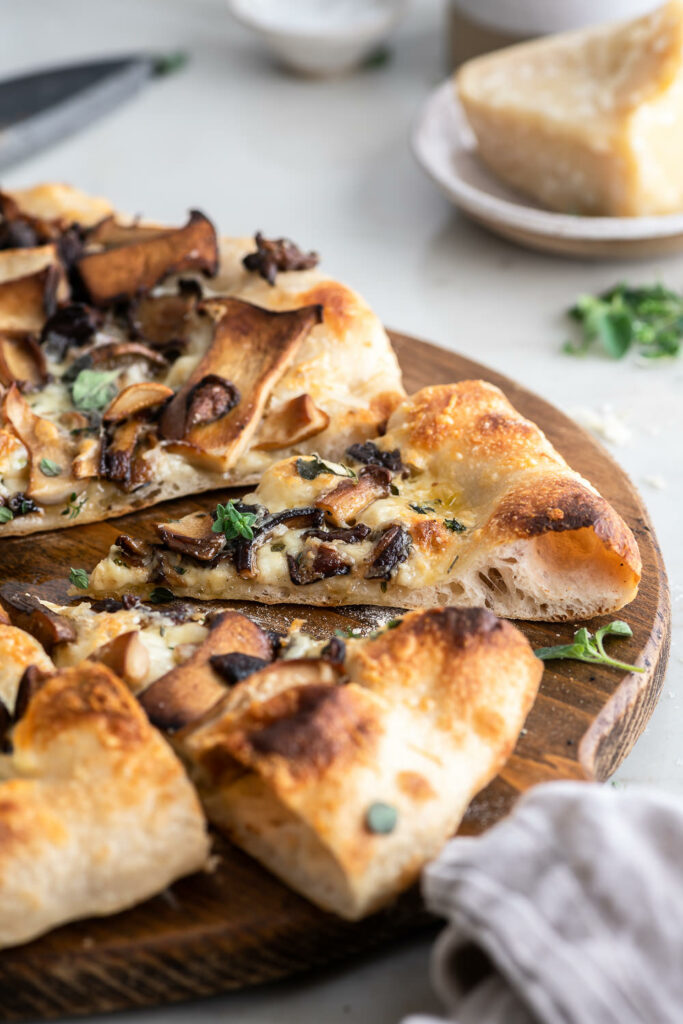
A Taste of the Forest Floor: Native American Wild Mushroom Pizza
The aroma of woodsmoke, the earthy scent of damp soil after a rain, the rustle of leaves underfoot – these are the sensory hallmarks of the forest. For millennia, Indigenous peoples of North America have held a profound connection to these wild spaces, not just as sources of sustenance and shelter, but as integral parts of their spiritual and cultural lives. Among the most revered gifts of the forest are its wild mushrooms, a diverse and often ephemeral bounty that has graced Native American tables for generations.
Today, we can explore this ancient relationship through a modern culinary lens: the Native American Wild Mushroom Pizza. This dish is more than just a fusion of traditional ingredients and contemporary cuisine; it’s a celebration of ancestral knowledge, ecological stewardship, and the exquisite flavors that the North American wilderness offers. It’s a way to honor the deep understanding Indigenous communities have of their land, a knowledge that guided them to identify, harvest, and prepare these fungal treasures.
The Forest’s Bounty: A History of Wild Mushrooms in Native American Cuisine

For countless Indigenous tribes across the continent, wild mushrooms were not a novelty but a staple. Their presence in the diet varied by region, season, and tribal traditions. From the forests of the Pacific Northwest to the woodlands of the Northeast and the plains fringed with trees, mushrooms provided essential nutrients, unique textures, and a distinct umami depth to meals.
Tribes like the Menominee of Wisconsin, for example, were known for their extensive knowledge of fungi, utilizing various species for food and medicinal purposes. The Pomo of California traditionally harvested mushrooms, often after the fall rains, incorporating them into their stews and other dishes. Similarly, tribes in the Great Lakes region, such as the Ojibwe and Dakota, would forage for mushrooms, with specific varieties holding cultural significance.
The act of foraging itself was a deeply ingrained practice, passed down through generations. Elders taught younger members how to identify edible from poisonous species, the best times and places to find them, and the respectful methods of harvesting. This knowledge was not just about survival; it was about living in harmony with the environment, understanding the delicate balance of the ecosystem, and taking only what was needed. This principle of sustainability is a cornerstone of Indigenous philosophy and is as relevant today as it was centuries ago.
The Art of the Forage: Identifying and Preparing Wild Mushrooms
The allure of wild mushroom pizza lies in the unique flavors and textures that these forest gems offer, flavors that simply cannot be replicated by their cultivated counterparts. However, the responsible and safe consumption of wild mushrooms hinges on accurate identification. This is where the wisdom of Indigenous foragers is paramount.
While this article cannot replace the expertise of a seasoned forager or a mycologist, it’s crucial to acknowledge the diversity of edible wild mushrooms found across North America. Some commonly found and historically utilized species include:
- Morels (Morchella spp.): Highly prized for their honeycomb appearance and rich, earthy flavor. They are often found in spring, near certain trees like ash and elm, or after forest fires.
- Chanterelles (Cantharellus spp.): Known for their beautiful golden-orange hue and fruity, peppery aroma. They thrive in deciduous and coniferous forests.
- Oyster Mushrooms (Pleurotus spp.): These shelf-like mushrooms have a delicate, slightly sweet flavor and a tender texture. They often grow on dead or dying hardwood trees.
- Boletes (Boletus spp.): A broad category that includes many edible species, often characterized by their spongy pores instead of gills. Their flavors range from nutty to meaty.
- Chicken of the Woods (Laetiporus sulphureus): This vibrant, orange and yellow mushroom has a unique texture and flavor reminiscent of chicken. It grows on living or dead hardwood trees.

Crucially, it is imperative to reiterate that misidentification can lead to severe illness or even death. If you are not an experienced forager, always purchase wild mushrooms from reputable sources such as farmers’ markets or specialty stores, or go on guided foraging trips with experienced individuals. Never consume a wild mushroom unless you are absolutely certain of its identification.
Once identified and safely harvested, wild mushrooms are typically prepared with minimal intervention to preserve their natural flavors. Common methods include sautéing in butter or oil, drying for later use, or incorporating them into stews and broths.
Translating Tradition to the Plate: The Native American Wild Mushroom Pizza
The Native American Wild Mushroom Pizza is a canvas for these exquisite forest flavors. The base is a hearty, often rustic dough, reflecting the earthiness of the ingredients. The sauce is typically a departure from the traditional tomato, leaning towards a creamier, more savory foundation that complements the mushrooms without overpowering them.
The star of the show, of course, is the diverse array of wild mushrooms, sautéed to perfection to release their full potential. These can be a single prized variety or a carefully curated blend, each contributing its unique note to the symphony of flavors.
Beyond the mushrooms, the pizza can be adorned with other ingredients that echo the bounty of the land. Think of:
- Wild Leeks or Ramps: These pungent, oniony greens offer a sharp counterpoint to the richness of the mushrooms.
- Berries: A scattering of tart berries, like wild blueberries or cranberries, can add a surprising burst of sweetness and acidity.
- Herbs: Foraged herbs like wild thyme, oregano, or sage can further enhance the woodland aroma.
- Cheeses: Mild, creamy cheeses like a fresh goat cheese or a mild, aged cheddar can bind the flavors together.
The philosophy behind this pizza is one of respect – respect for the ingredients, respect for the land from which they came, and respect for the traditions of the Indigenous peoples who first unlocked their culinary secrets. It’s about mindful eating, appreciating the interconnectedness of nature, and savoring a taste that is both ancient and utterly contemporary.
Crafting Your Own Native American Wild Mushroom Pizza: A Recipe
This recipe is a suggestion, an inspiration to explore the world of wild mushrooms. Remember to source your mushrooms responsibly and safely.
Yields: 1 large pizza
Prep time: 30 minutes
Cook time: 15-20 minutes
Ingredients:
For the Dough:
- 2 cups all-purpose flour, plus more for dusting
- 1 teaspoon active dry yeast
- 1 teaspoon sea salt
- ¾ cup warm water (105-115°F)
- 1 tablespoon olive oil
For the Creamy Garlic-Herb Sauce:
- 2 tablespoons unsalted butter
- 2 cloves garlic, minced
- ¼ cup all-purpose flour
- 1 ½ cups milk (whole milk is recommended for richness)
- ½ teaspoon dried thyme (or 1 teaspoon fresh, chopped)
- ¼ teaspoon dried rosemary (or ½ teaspoon fresh, chopped)
- Salt and freshly ground black pepper to taste
- Pinch of nutmeg (optional)
For the Toppings:
- 2-3 tablespoons olive oil
- 1 pound mixed wild mushrooms (e.g., morels, chanterelles, oyster mushrooms, sliced or quartered if large)
- 1 small shallot, thinly sliced
- 1-2 cups mixed wild greens (e.g., ramps, spinach, arugula), roughly chopped
- ½ cup crumbled fresh goat cheese or mild feta
- Optional: A few fresh thyme sprigs for garnish
- Optional: A drizzle of truffle oil (use sparingly)
Instructions:
1. Make the Dough:
- In a large bowl, combine the flour and salt.
- In a small bowl, dissolve the yeast in the warm water and let it sit for 5-10 minutes until foamy.
- Pour the yeast mixture and olive oil into the flour mixture.
- Stir with a wooden spoon until a shaggy dough forms.
- Turn the dough out onto a lightly floured surface and knead for 5-7 minutes until smooth and elastic.
- Lightly oil a clean bowl. Place the dough in the bowl, turning to coat. Cover with plastic wrap and let rise in a warm place for 1-1.5 hours, or until doubled in size.
2. Make the Creamy Garlic-Herb Sauce:
- In a medium saucepan, melt the butter over medium heat.
- Add the minced garlic and sauté for 1 minute until fragrant, being careful not to burn.
- Whisk in the flour and cook for 1-2 minutes, stirring constantly, to form a roux.
- Gradually whisk in the milk, a little at a time, ensuring each addition is incorporated before adding more. Continue whisking until the sauce is smooth and thickened.
- Stir in the dried thyme and rosemary. Season with salt, pepper, and a pinch of nutmeg if using.
- Remove from heat and set aside. The sauce will thicken further as it cools.
3. Prepare the Mushrooms:
- Heat 2-3 tablespoons of olive oil in a large skillet over medium-high heat.
- Add the sliced shallots and sauté for 2-3 minutes until softened.
- Add the mixed wild mushrooms to the skillet. Cook, stirring occasionally, for 5-7 minutes, or until the mushrooms are golden brown and have released their moisture. Season with a pinch of salt and pepper.
- Remove the mushrooms and shallots from the skillet and set aside.
4. Assemble the Pizza:
- Preheat your oven to 475°F (245°C). If you have a pizza stone or steel, place it in the oven while it preheats.
- Punch down the risen dough and turn it out onto a lightly floured surface.
- Gently stretch or roll the dough into your desired pizza shape (approximately 12-14 inches in diameter).
- Carefully transfer the pizza dough to a pizza peel dusted with cornmeal or flour, or directly onto a piece of parchment paper.
- Spread a generous layer of the creamy garlic-herb sauce over the pizza dough, leaving a small border for the crust.
- Evenly distribute the sautéed mushrooms and shallots over the sauce.
- Scatter the chopped wild greens over the mushrooms.
- Crumble the goat cheese or feta over the toppings.
5. Bake the Pizza:
- Carefully slide the pizza onto the preheated pizza stone or steel (or place the parchment paper with the pizza directly onto the oven rack).
- Bake for 15-20 minutes, or until the crust is golden brown and the cheese is melted and bubbly.
- Remove from the oven. Garnish with fresh thyme sprigs and a drizzle of truffle oil, if desired.
- Let the pizza cool for a few minutes before slicing and serving.
A Culinary Heritage on a Plate
The Native American Wild Mushroom Pizza is an invitation to connect with the earth, to appreciate the bounty of the wild, and to honor the enduring wisdom of Indigenous cultures. It’s a dish that speaks of the forest floor, of ancient traditions, and of the simple yet profound pleasure of sharing a delicious meal that tells a story. As you savor each bite, remember the hands that first gathered these ingredients, the knowledge that guided their use, and the spirit of the land that nourishes us all.


